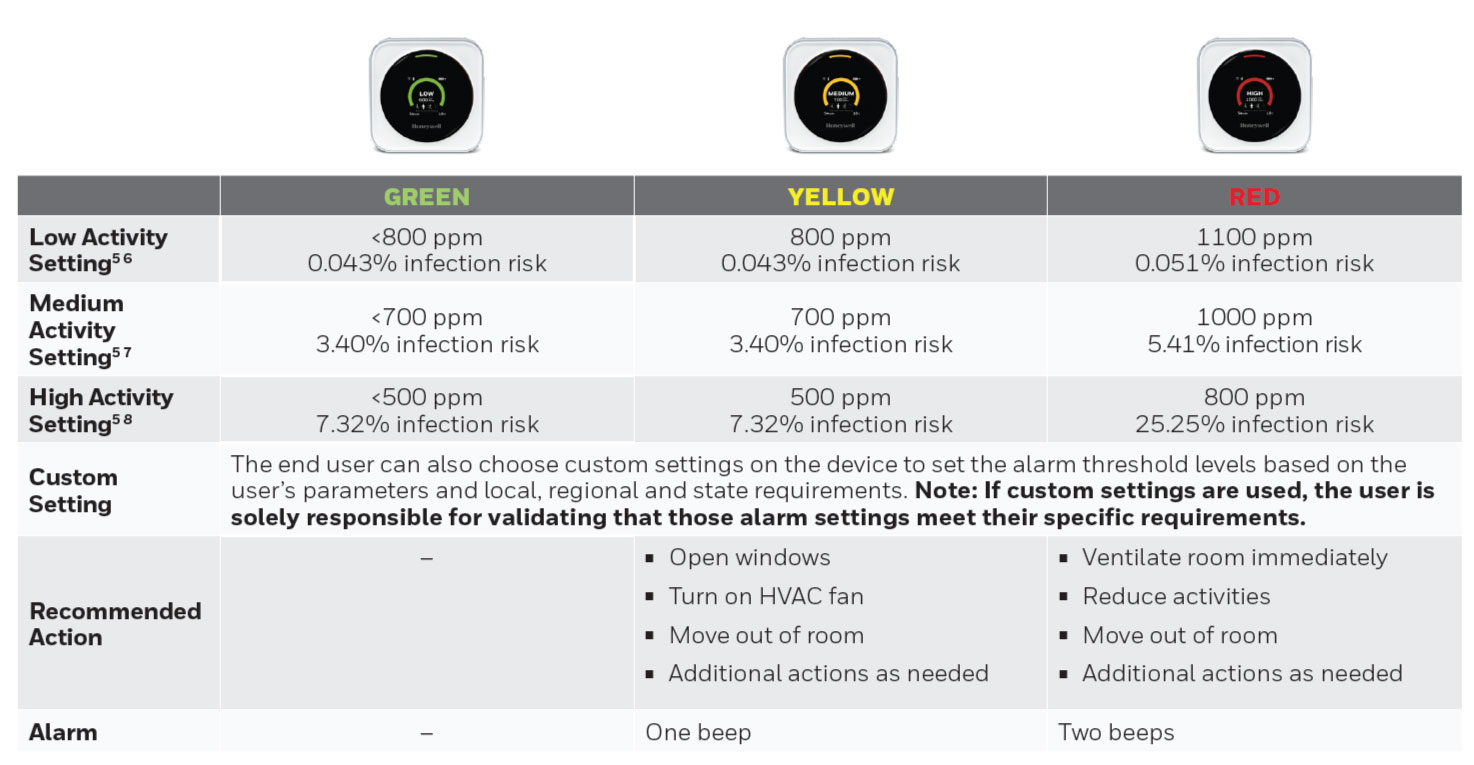 Cost-effective CO2 Air Monitor
Cost-effective CO2 Air Monitor
The Honeywell Transmission Risk Air Monitor is an easy-to-deploy, portable CO2 (carbon dioxide) that features a proprietary risk alerting system based on different activity levels within a room. This allows end-users to proactively improve indoor ventilation, which according to the U.S. Centers for Disease Control and Prevention1, can help reduce the spread of certain diseases and decrease the risk of exposure among building occupants.
contact us for more information about the Honeywell CO2 Air Monitor
BUY NOW from the Gas Detector Shop by Aegis Sales & Service
For use in schools and restaurants that will alert users when conditions are present that may increase the risk of potential exposure to airborne viral transmission in an indoor area.*
Features of the Honeywell Transmission Risk Air Monitor (HTRAM)
- Monitor carbon dioxide, Temperature and Relative Humidity
- Uses a non-dispersive infra-red (NDIR) sensor for more accurate monitoring
- Three pre-programmed activity level settings (Low/Medium/High)
- Traffic Light Visual Indication (Green/Yellow/Red)
- Sound Alert: one beep for medium alert; two beeps for high alert
- Small portable size and lightweight
- Easy-to-use one-button setting
- 10 hours battery life using Lithium-ion rechargeable battery
- 1-year limited product warranty
Research conducted by scientists at the University of Colorado2,3 has shown that real-time monitoring of indoor ambient air can be an indicator of increased risk of airborne viral transmission, utilizing different levels of risk-based factors such as CO2 concentration levels and the type of human activity in the area.* Using this guidance and Honeywell algorithms, we identified air quality conditions that are driven by common activities and variables such as average room size, number of people present, breathing rate, and duration. The device comes with three pre-programmed indoor activity settings: low activity (movie theatres, libraries, and classrooms), medium activity (restaurants, offices, small clinics), and high activity (gyms, indoor arenas, recreation centres) and is recommended for coverage of 800-1000 square feet. For each setting, the monitor provides indications using a traffic light pattern (green, yellow, or red) and a sound alarm so users can be aware of conditions that may increase the risk of airborne transmission based on detectable CO2 levels.
HTRAM Specifications
| Size/Dimensions |
80mm x 80mm x 22mm
|
| Weight | 140g |
| Housing Materials | Aluminum Alloy |
| Display | TFT |
| Input Voltage | 5V |
| Input Current | 1A |
| Battery | Lithium-ion rechargeable battery with 10 hour battery time |
| Battery Capacity | 2,600 mAh |
| Operating Temperature & Humidity |
0°c to 40°c, 0% RH to 90% RH |
| USB Port |
Micro USB
|
| Warranty |
1 year
|
HTRAM Sensor Range
| CO2 (NDIR) |
400ppm to 2000ppm, up to 10,000 ppm extended range
|
| Temperature |
-20°c to 60°c |
| Humidity | 0% RH to 100% RH |
Device Indicators

for the Transmission Risk Air Monitor by Honeywell Datasheet
*The Honeywell Transmission Risk Air Monitor (HTRAM) analyzes specific air quality conditions and alerts the user when conditions are present that may increase the risk of exposure to airborne viral transmission. It does not prevent or reduce virus transmission nor mitigate viruses that may be present, nor does it detect or warn against the presence of any virus, including but not limited to COVID-19. The HTRAM does not repel or destroy any microorganism, viruses, bacteria, or germs. for more information refer to the datasheet for more information
References:
- Ventilation in Buildings | CDC
- COVID-19 Airborne Transmission Tool Available | CIRES (colorado.edu)
- Exhaled CO2 as COVID-19 infection risk proxy for different indoor environments and activities, Sept. 2020, https://www.medrxiv.org/content/10.1101/2020.09.09.20191676v1

